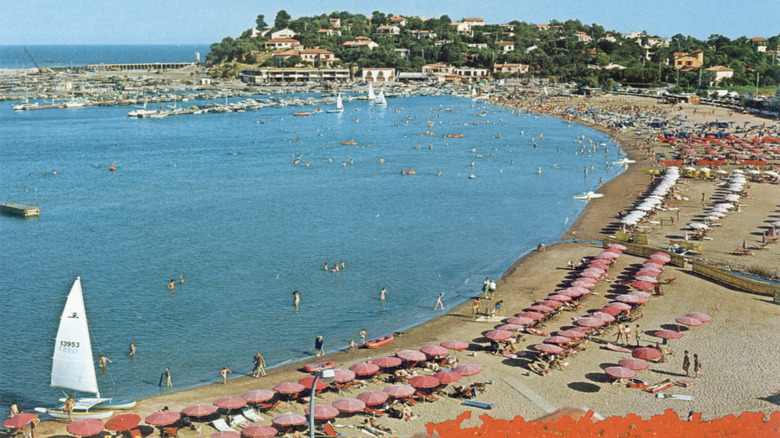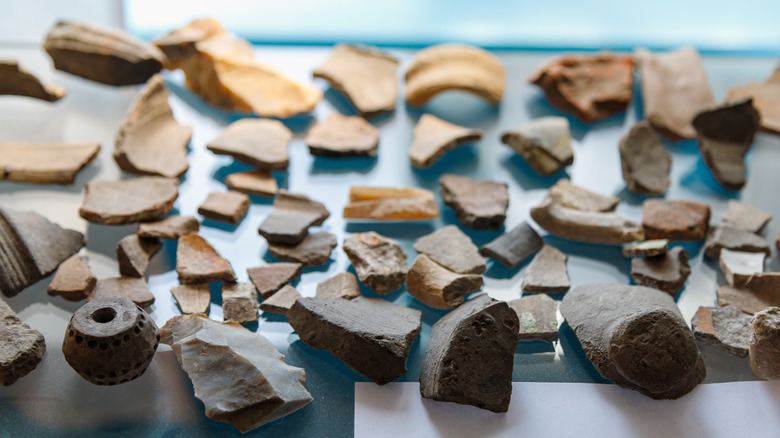Ancient Building Hidden Thousands Of Years Discovered Under A French Parking Lot
The French Riviera: If you don't know exactly what or where it is, you've still heard the name. Take the charm of a French town and fuse it with the scenic splendor of the Mediterranean and you've got the basic idea. Located along the southeastern coast of France and at a latitude higher than Tuscan Italian cities like Florence and Pisa, there really is no reason to ever want to leave after you've arrived. And now we've got evidence that ancient peoples felt exactly the same about the region's sun, sand, water, and sky in the form of a recently discovered Neolithic site.
Found in the Riviera's beachside town of Cavalaire-sur-Mer, the newly discovered site didn't lay buried under the sand and surf, but the location of a new parking lot. So firstly: No, not even the prettiest places on Earth can't escape the ugliest of concrete parking lot slabs. Secondly: Out of all the places to build a parking lot, the Neolithic site happened to be under this one particular spot. And thirdly: This isn't just any Neolithic site — it's one of the oldest of its type in France.
Research is still underway, but we know that the site dates to about 4800 B.C.E., when agriculture first took root in the region, people first started making settlements along the coast, and life transitioned from hunter-gatherer communities to farming communities. We're talking buildings, walls, hearths, and more. They even used a mixed dirt-and-gravel concrete-like material to build things. Some things never change.
A perfectly scenic spot for ancient farmers to settle
It might seem like the last place you'd find a Neolithic settlement full of stone architecture. You probably think of some distantly cold place like Wales, but it makes sense, right? If the ancient people who built the newly discovered site in Cavalaire-sur-Mer trekked all the way to the southern French coast, they probably would've plunked their fists on their hips and said, "Yep, this'll do."
Those individuals were the region's first farmers, and their appearance at this exact, newly discovered location explains a lot about the movement of peoples at the time. The site dates to what's called the "Cardial period," a segment of time going back to about 6,000 B.C.E. and which marks the switch from nomadic wanderer to permanently settled farmers across the southern European coast from Italy out to Portugal. Starting in the fertile crescent, the "agricultural revolution," as it's called, traveled east to west. This revolution started at the beginning of the Holocene Epoch, when Earth started to warm up about 11,700 years ago (9,700 B.C.E.). The term "Cardial" refers to a segment of time when pottery was carved with decorations using seashells.
By about 9000 B.C.E., we've got humanity's first megalithic site, Gobekli Tepe, in modern-day Turkey. From 7400 to 6200 B.C.E., we get one of humanity's first village-like settlements, Çatalhöyük, further west from Gobekli Tepe. Bit by bit, century by century, settlers domesticated plants and animals westward out to Portugal, a route which encompasses Cavalaire-sur-Mer and the newly discovered site. The newly discovered settlement, which dates to about 4800 B.C.E., puts a definitive pin on the map of the human migration story.
Evidence of homes, walls, hearths, ceramic, and more
Looking at the newly discovered Cavalaire-sur-Mer Neolithic site, we've got the remains of a full-on, hall-like house with walls 23 feet long and 16 feet wide. These walls, as mentioned, were made by mixing dirt and gravel into a substance resembling modern-day concrete. The structure was divided into different sections for different purposes, including a section that contained a hearth for fires — a kitchen, if you will. An extremely hot fire would have been necessary to bake the clay found at the site, too — clay which would have been used for storage vessels. The entire site was buried about 13 feet underground.
But even more than the discoveries, the site itself alludes to many more similar sites sitting underneath a McDonalds, a living room, a bank, or a patch of forest in the middle of nowhere. The dense alluvium of the coastal Mediterranean region, composed of packed silt, clay, gravel, etc., is the ideal strip of land to find Neolithic settlements. It was the perfect place to settle thousands of years ago during the Cardial period.
Research into the site is newly underway and will reveal more in the months and years to come. But in a French-to-English translated statement, Popular Mechanics quotes the French National Institute for Preventive Archaeological Research (INRAP) responsible for overseeing the site. They said that the area "constitutes a valuable contribution to the enrichment of knowledge."


